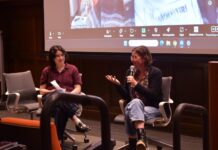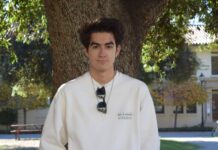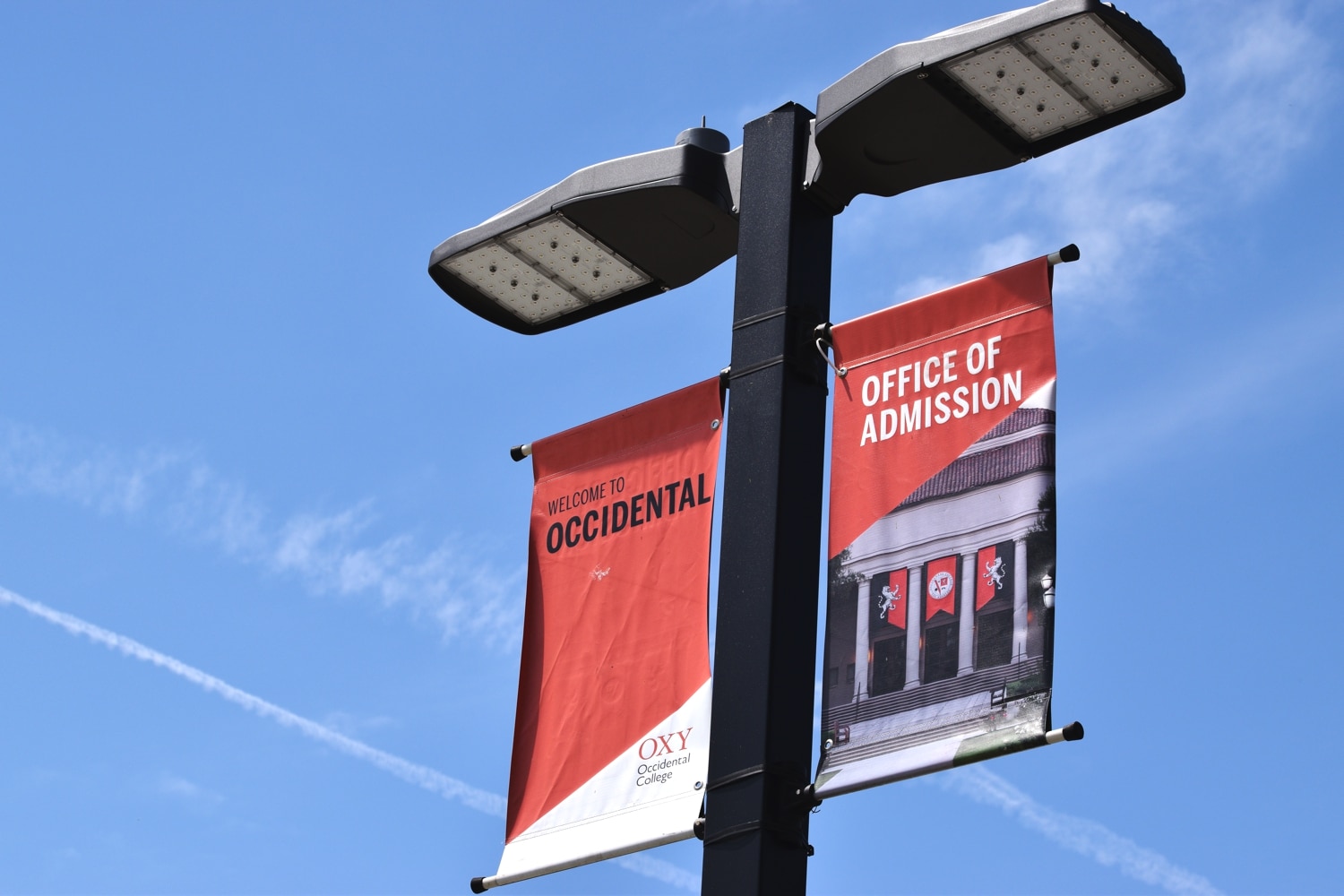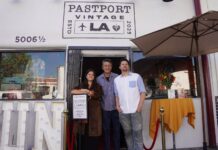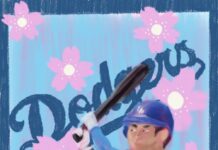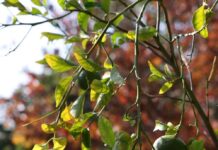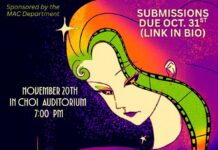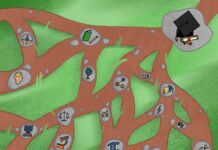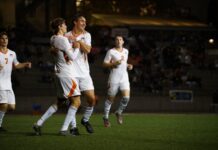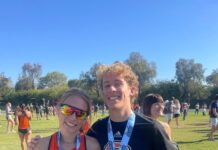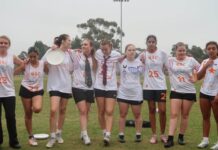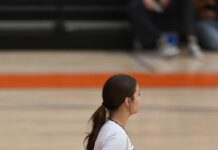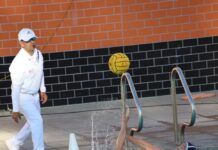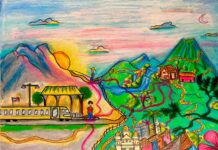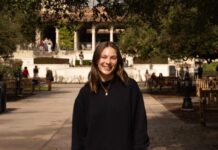If students do not feel academically fulfilled with the intensive class workload at Occidental, they have boundless opportunities to explore their academic passions and investigate their inquiries outside the classroom and even beyond the campus.
Ellen Goldenberg (senior) said that Occidental is unique in that it provides easily accessible opportunities for students to pursue undergraduate research with their professors. For some, this can even result in publication in prestigious academic journals.
Anton Molina (senior) feels that his research in the chemistry department has given him a strong sense of community with other student researchers and chemistry faculty.
“It’s a priceless support group and a constant source of inspiration,” Molina said.
Students who wish to put lessons from class to work in the real world can collaborate with a faculty mentor. Those who write a proposal that describes the project’s significance, methodology, impact and budget may be selected for financial support by Occidental’s Undergraduate Research Center (URC). Students essentially have free range to propose their own original research or create a research question based on an ongoing project by their faculty member of choice.
The URC provides stipends for supplies, travel and other costs for projects that take place during the academic year, as well as for course work, independent research, and outreach programs. Occidental’s nationally recognized summer research program provides a full-time, ten-week mentored research experience on campus, and students can even receive support in short-term international and regional travel.
Opportunities for Occidental students to take advantage of both funded and non-funded URC research are available across all academic departments.
***********************************************************
The pungent fumes of dead fish and preservation chemicals in the Moore Laboratory of Zoology are a familiar smell for seniors Sabrina Moffly and Ellen Goldenberg—Vantuna Research Group (VRG) research assistants who spend five to 10 hours a week working among the jars of preserved marine organisms and humming, filtered aquariums.
During a typical day of work, Goldenberg is hunched over a microscope and Moffly rubs sandpaper on something incredibly small. They are in the process of creating age and growth curves for the Garibaldi and California Corbina marine fish species. They strive to better understand the life history of the fish species as part of a study advised by biology Professor and VRG Director Daniel Pondella.
“It is critical to understand the various life history components of these species so that we can model, evaluate and suggest appropriate management action in Southern California,” Pondella said.
Though the Garibaldi is not a threatened species, the state of California imposed regulations on the capture of its state marine fish and only those with state-issued permits can collect Garibaldi. Corbina are also not threatened but population management is still crucial to ensure their stability.
Goldenberg and Moffly do meticulous work with fish otoliths—calcium carbonate “earstones” located behind the brain of bony fish that help with balance, orientation and sound detection. When cut into thin sections, an otolith reveals alternating opaque and translucent bands much like the rings on a tree trunk. New layers grow on a daily basis and therefore can be used to determine the age and growth pattern of the individual. Pondella is impressed with the level of finesse at which Moffly and Goldenberg perform their research.
“They are doing awesome jobs,” Pondella said. “They both work extremely well unsupervised.”
Pondella, as well as some other professors in the VRG, help the students in the lab a few days a week, especially to settle any discrepancies involved in counting the age rings. Most of the time, however, Moffly and Goldenberg are on their own.
“It’s kind of nice, the independence you get from it and the level of trust,” Moffly said.
Goldenberg and Moffly are in different stages of compiling the life history of their respective fish. Moffly began her research, funded by the URC, in Summer 2014. Goldenberg began her project with two other students in Pondella’s Research Methods class in Fall 2014. They took on the task of reworking a project started about ten years ago by another Occidental student that yielded unsatisfactory results. There was still a significant amount of work to be done in the project when the semester ended, but Goldenberg was eager to see the project through to the end.
“It basically got left up to me to finish it,” Goldenberg said.
Specimens of the California Corbina—a long, slender saltwater fish with metallic grey coloration—were primarily collected by adjunct instructor and VRG Research Scientist Jonathan Williams during his masters work at California State University, Northridge.
“I had to take a little field trip to Cal State Northridge to go paw through this professor’s drawers to find all the original data,” Goldenberg said.
Occidental students continued to collect specimens during marine biology field trips with Professor Williams. The samples date from about 2002-2014.
“It’s sort of unique because the California Corbina is part of the Croaker family and most of the other species have been pretty well studied but this one hasn’t really been studied well,” Goldenberg said.
Moffly’s subject, the bright orange Garibaldi, is widely sought after by the commercial aquarium industry because it is “super cute and pretty,” she said. The strict state protection legislation put in place to prevent overfishing has hindered much scientific research on the species. The VRG was one of very few groups given permission to collect a limited number of individuals off the mainland of Santa Catalina Island in order to do life history studies that will aid with population management of the species. Moffly’s samples were collected between 2013 and 2015.
The limited age and growth data that exists for the Garibaldi was collected primarily in the 1960s using an outdated and moderately inaccurate aging technique, in which rings on the fish’s scales were analyzed.
“It’s really cool that I get to work on a fish that no one has worked on since the ’60s,” Moffly said.
The aging technique that Moffly and Goldenberg use is more accurate because the otoliths are not subject to the same amount of wear and tear as are scales. With larger otolith samples than Moffly, Goldenberg can “section” the otoliths by gluing them onto a small wooden block and then cutting a transverse section, approximately 0.5mm thick, using a low-speed saw. For Goldenberg, the most difficult part of the process is removing the otolith from the mounting block and cutting off the excess wood, which is done with a small blade.
“Sometimes it flies everywhere and cracks,” Goldenberg said.
Garibaldi otoliths are much tinier and therefore destined to break in the sawing process, so Moffly sections the otoliths using sandpaper rather than the small blade.
It is a fragile, meticulous job that requires patience and careful hands. The stakes are high because each fish only has two otoliths, which can be easily cracked and dropped.
“Sometimes you get lucky and they break right through the middle,” Moffly said.
With such luck, Moffly and Goldenberg can count the rings in the middle as usual. In the case of an uneven break, they resort to restarting the process with the remaining otolith, crossing their fingers for their last chance.
“The scariest thing is when you drop an otolith on the floor,” Moffly said. “You have a minor heart attack and proceed to get on all fours and search for it.”
Moffly and Goldenberg have resorted to putting tape on their hands and patting around the floor in hopes that the lost otolith will stick.
After exposing the growth rings, they put the otolith section onto a slide to photograph it under a dissecting microscope and use the digital picture to count the annual rings—one pair of opaque and translucent rings corresponds to one year of growth. Goldenberg is at the point in the project where she has begun counting the rings, but Moffly is still preparing the slides to be read at a later date.
When Moffly began the project, only a few samples had been previously collected and analyzed in the Moore Lab.
“It’s been really exciting because I’ve got to remove almost all of the otoliths that I’m working on, so I’ve seen it in the fish and now I’m seeing it under the microscopes,” Moffly said.
She expects to complete the preparation of all the otolith samples by the end of the semester and is training VRG student researcher Grace Coogan (sophomore) to take over the project when she graduates. Moffly taught Coogan the preparation and analysis methods using practice otoliths, and thinks that Coogan is ready to join her in preparing the real samples.
Goldenberg is almost done preparing and analyzing all the larger otoliths, and next she will start preparing the smaller ones using the same method as Moffly.
“I expect them to have a publishable study completed by the end of the semester and they will be authors on those peer-reviewed papers,” Pondella said.
Goldenberg feels lucky that she has the opportunity at Occidental to be a published author as an undergraduate.
“You don’t really see this opportunity in most schools,” she said.
However, getting published is not the most important goal for either Moffly or Goldenberg.
“I just love fish,” Goldenberg said.
Moffly echoed Goldenberg’s words and added that she is proud of contributing to scientific knowledge that is crucial to maintaining healthy global fisheries.
“It’s just a small cog in the machine,” Moffly said. “But its important overall.”
They both plan to continue their studies in marine biology after graduating from Occidental. Moffly hopes to either work in a natural history museum, teach biology or continue working with otoliths in another fish species. Goldenberg will start a master’s program at Nova Southeastern University in Florida next fall.
***********************************************************
When Anton Molina (senior) transferred to Occidental from community college as a sophomore, he already knew that he wanted to get involved with nanoparticle research, despite his unfamiliarity with the subject.
“I didn’t really know what that meant at the time,” Molina said.
His peers directed him to Professor Eileen Spain, who was researching gold nanoparticles.
A nanoparticle is a particle with dimensions between one and 100 nanometers that behaves as a whole unit in terms of its transport and properties. As materials are reduced to nanoparticle scale, they have new properties that are unique to their size.
“In the case of gold, it has interesting optical properties,” Molina said.
Molina displayed one of these properties by using a well-known procedure to shrink gold particles down to a size that made them appear red. Gold nanoparticles can appear as a variety of other colors depending on their size, particularly if the particles are rod-shaped.
Molina joined Spain’s research project the summer after sophomore year.
Molina and seniors Ben Clark and Jenny Wang performed experiments that characterized nanocluster structure and morphology using atomic force microscopy. To determine how the gold nanoparticles that comprise a typical nanocluster are arranged, they prepared an emulsion of nanoparticles on a thin film of glass and used sonication—application of sound energy to agitate the particles—to produce well-defined nanoclusters. They measured the newly cleaved clusters and confirmed that the nanoparticles have an average diameter of 13 nanometers and that the nanoclusters have a triangular shape made up of about 25 nanoparticles.
Last March, Spain helped publish the results of that summer’s research, “Au Nanoparticle Clusters from Deposition of a Coalescing Emulsion,” in the Journal of Colloid and Interface Science with Clark, Molina, and Wang as authors.
Once published, the three students branched off into their own projects. Molina received funding from the Norris Scholar Grant—an award that provides a stipend and covers room, board and other costs of summer research at Occidental—for research with Spain titled “Synthesis and Magnetoelectric Properties of Nanostructured Magnetite (Fe3O4) Thin Films Deposited Through Particle-Stabilized Emulsion Coalescence.”
Molina said that Professor Spain gave them a lot of freedom to design and carry out their own projects, offering help only if they asked for it.
“My original goal was to use the work that we did over the summer and apply it to a different set of nanoparticles—magnetic ones,” Molina said.
He intended to find a useful application for using the films they made over the summer to measure physical properties of magnetite.
“[Chemistry research] is exploration,” Molina said. “Sometimes you make something and just start playing around with and, if it does something interesting, then you start doing more premeditated experiments.”
However, magnetite proved to be a very uncooperative playmate. Due to the difficulty of creating magnetite nanoparticles, Molina spent a lot of time just trying to construct magnetite films in a way that was reasonably reproducible.
“I made a couple foolish mistakes of choosing not only materials that [Professor Spain] didn’t have any familiarity with, but also choosing material that was apparently notoriously difficult to work with,” Molina said.
Molina attended an American Chemical Society convention in Denver during March to present a poster on his research, where multiple researchers approached him, impressed at how he managed to successfully manipulate his magnetite. Although he accomplished a feat that other scientists often could not, Molina is not completely content with his product.
“It’s reproducible, and I’ll settle with that,” he said.
According to Molina, a lot of time is spent doing boring yet essential tasks such as keeping the lab clean and safe and making new material for the experiments.
“That’s been the No. 1 time-sucker for me; carrying out this magnetite synthesis which takes nine hours to do, and trying to keep things clean,” he said.
Magnetite synthesis requires only one hour of actual work, but eight hours of letting the reactants reflux to create the final product.
His experiments evolved into using magnetic nanoparticles as an absorbent for other nanoparticles, which are increasingly common environmental pollutants, and other molecular contaminants.
On the visible scale, a magnetite rock has polar ends, thus it acts like a bar magnet. But on the nanoscale, it loses its permanent magnetism, having the same magnetic strength throughout as it loses its pole. This size-related property has useful applications.
“You have this magnet, and the idea is, if you can make it stick to other things, then you can pull the magnet and the contaminant out of the water,” Molina said. “The trick becomes coating it with some other molecule that can do that.”
Molina has been using chitosan, a polysaccharide derived from shrimp shells that is unique among natural materials because it is a positively charged polymer. The positively charged chitosan particle can stick to a variety of negatively charged contaminants in water such as pharmaceuticals, as well as (positively charged) metal cations.
After extensively researching other scientific papers and experimenting with a lot of his own trial and error, Molina was finally able to get magnetic nanoparticles to catch and release gold nanoparticles using acid-base chemical equilibria. Spain attributes his success to his commitment and strong work ethic.
“He isn’t rattled by the inevitable research setbacks and he enjoys a challenge,” Spain said.
For the last year, Molina has dedicated 15-20 hours a week to his research. He said that time spent in lab can sometimes be frustrating because a lot of his work ends up going nowhere.
However, his dedication has taken him far. In Spring 2014, Molina was honored with a Barry Goldwater Scholarship—a $7,500 scholarship for sophomores and juniors planning to pursue careers in mathematics, the natural sciences or engineering. This year he earned the prestigious Fulbright grant to research in Germany. He will be working in a biochemistry lab modifying engineered spider silk proteins with synthetic oligonucleotides—a type of single-stranded DNA—and mobilizing them onto different surfaces.
Molina hopes to wrap up his project at Occidental over the summer before he flies out in August.
He is currently trying to pool all his findings from the last few years into a thesis. According to Molina, compiling years of research into a paper, articulating a cohesive thesis and coming up with original and significant research ideas is an enormous organizational challenge—one that is what is expected in graduate school.
“Not having so much guidance has been a blessing because, going into a graduate program, I feel like I can meet a lot of the organizational challenges,” Molina said.
So far his thesis paper consists of a section on the process of synthesizing gold and magnetite nanoparticles and their properties, a review of his past research with gold film, a lot about his failed attempts at trying to get the magnetite particles to do the same thing, and a conclusion wrapping up the work he has done using magnetite as an absorbent.
Molina said that publishing this year’s research would be a nice sense of closure but that the learning process has been more valuable.
“At the end of the day, I learned a hell of a lot about how to do this kind of work,” he said. “The most rewarding part is being able to come up with something on your own and see that through—that’s really awesome, and tough.”
Spain expects Molina to earn a Ph.D. in materials science from a world-class university.
“Then,” she said, “the sky’s the limit.”
![]()


